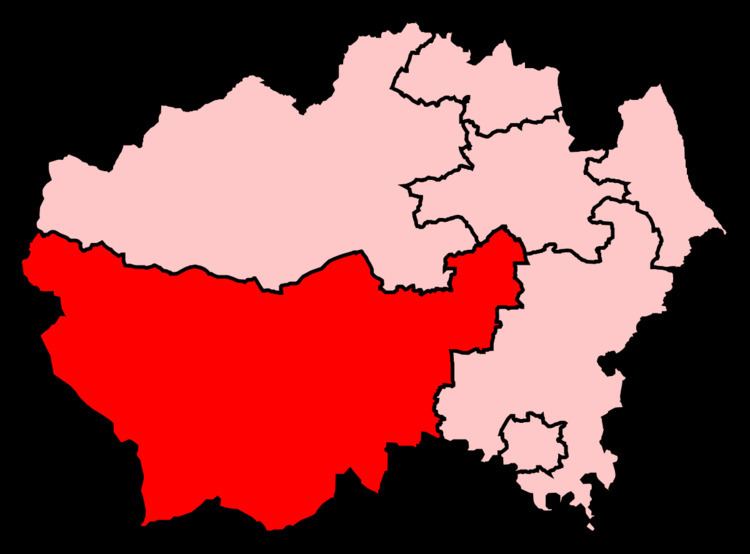Electorate 68,501 (December 2010) | Population 87,143 (2011 census) Created 1885 Number of members One | |
 | ||
Bishop Auckland is a constituency represented in the House of Commons of the UK Parliament since 2005 by Helen Goodman of the Labour Party.
Contents
Constituency profile
Formed in 1885, the seat has the market town Bishop Auckland which has a mixed modern and historic high street, the similarly sized Barnard Castle and large areas used for agriculture, particularly hill farming on the rolling landscape that cuts into the Pennines with substantial livestock. Most housing, many small towns and most facilities were built in the prosperous era of coal mining which brought thousands of workers to live in Bishop Auckland town and neighbouring settlements. Manufacturing, including food processing and packaging, public sector employment, retail and agriculture are the main occupations. Since 1935 the winning candidate for MP has been from the Labour Party; the former Labour Chancellor Hugh Dalton, was the MP here from 1929 to 1931, and after regaining the seat in 1935, remained MP until 1959.
Within the seat are Auckland Castle and Park, Lartington Hall, Windlestone Hall, Raby Castle, Binchester Roman Fort (Vinovia) and enclosures and industrial workings on Cockfield Fell.
Boundaries
1885-1918: Part of the Sessional Division of Bishop Auckland.
1918-1950: The Urban Districts of Bishop Auckland and Shildon, and part of the Rural District of Auckland.
1950-1955: The Urban Districts of Barnard Castle, Bishop Auckland, and Shildon, and the Rural District of Barnard Castle.
1955-1974: The Urban Districts of Barnard Castle and Bishop Auckland, the Urban District of Shildon except the part of the Middridge ward transferred to the Rural District of Darlington by the County of Durham (Parish of Great Aycliffe) Confirmation Order 1952, and the Rural District of Barnard Castle.
1974-1983: The Urban Districts of Barnard Castle, Bishop Auckland, and Shildon, and the Rural Districts of Barnard Castle and Darlington.
1983-1997: The District of Wear Valley wards of Bishop Auckland Town, Cockton Hill, Coundon, Coundon Grange, Escomb, Henknowle, St Helen's, West Auckland, and Woodhouse Close, the District of Teesdale, and the District of Sedgefield wards of Byerley, Middridge, Neville, Shafto, Simpasture, Sunnydale, Thickley, West, and Woodham.
1997-2010: The District of Wear Valley wards of Bishop Auckland Town, Cockton Hill, Coundon, Coundon Grange, Escomb, Henknowle, St Helen's, West Auckland, and Woodhouse Close, the District of Teesdale, and the District of Sedgefield wards of Byerley, Low Spennymoor and Tudhoe Grange, Middlestone, Spennymoor, Sunnydale, Thickley, and Tudhoe.
2010-present: The District of Wear Valley wards of Bishop Auckland Town, Cockton Hill, Coundon, Dene Valley, Escomb, Henknowle, West Auckland, and Woodhouse Close, the District of Teesdale, and the District of Sedgefield wards of Byerley, Low Spennymoor and Tudhoe Grange, Middlestone, Spennymoor, Sunnydale, Thickley, and Tudhoe.
The constituency is located in an upland, southern part of County Durham in the North East of England. On a more local level it was formed of the whole of the former Teesdale district, parts of former Wear Valley district and the former Sedgefield borough. The constituency includes as its major settlements the towns of Barnard Castle, Middleton-in-Teesdale, Bishop Auckland, Shildon, Spennymoor and its contiguous suburb village, Tudhoe, with their surrounding villages, dales and fields.
Elections in the 1910s
Elections in the 1910s
General Election 1914/15:
Another General Election was required to take place before the end of 1915. The political parties had been making preparations for an election to take place and by the July 1914, the following candidates had been selected;
